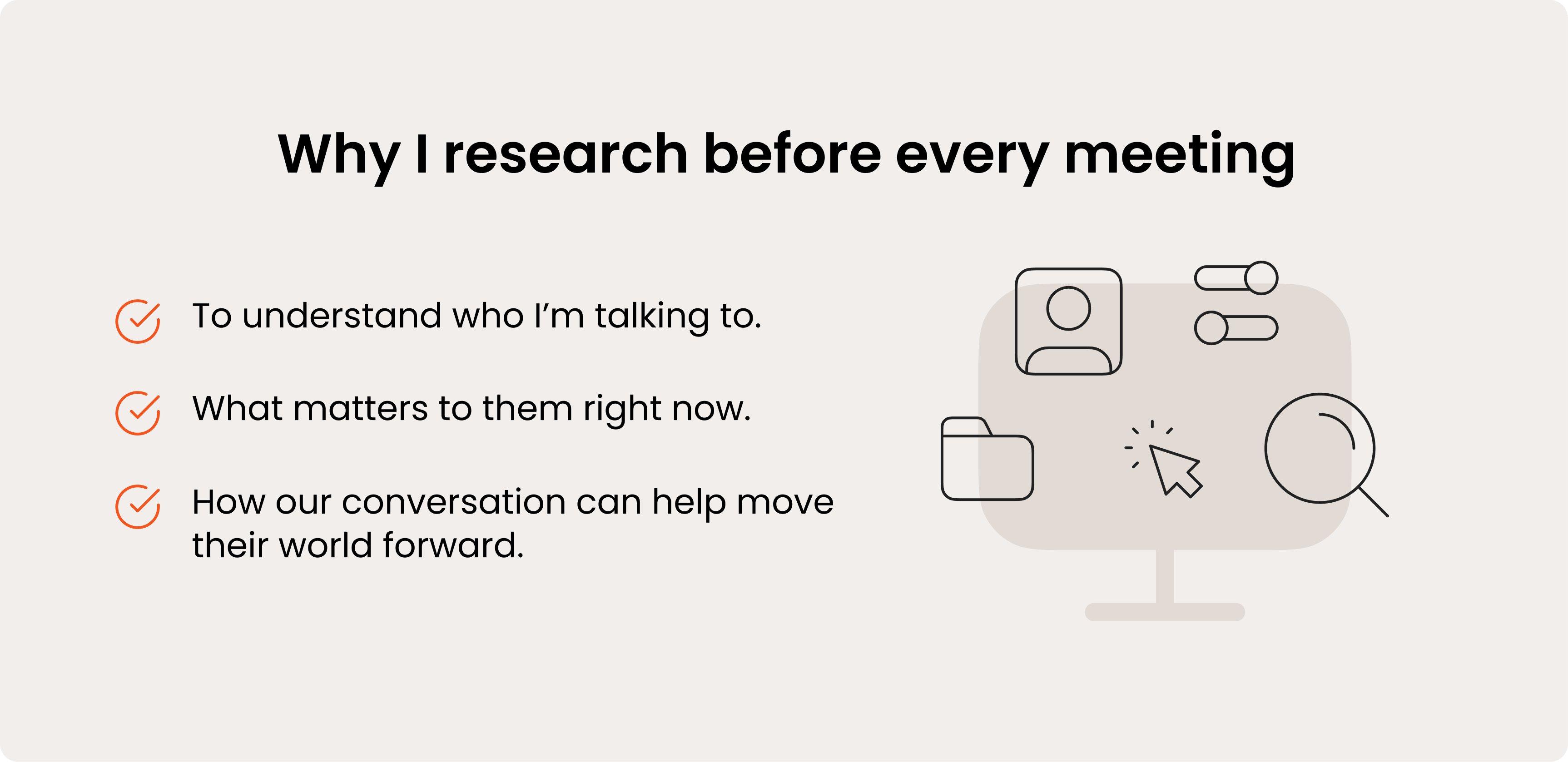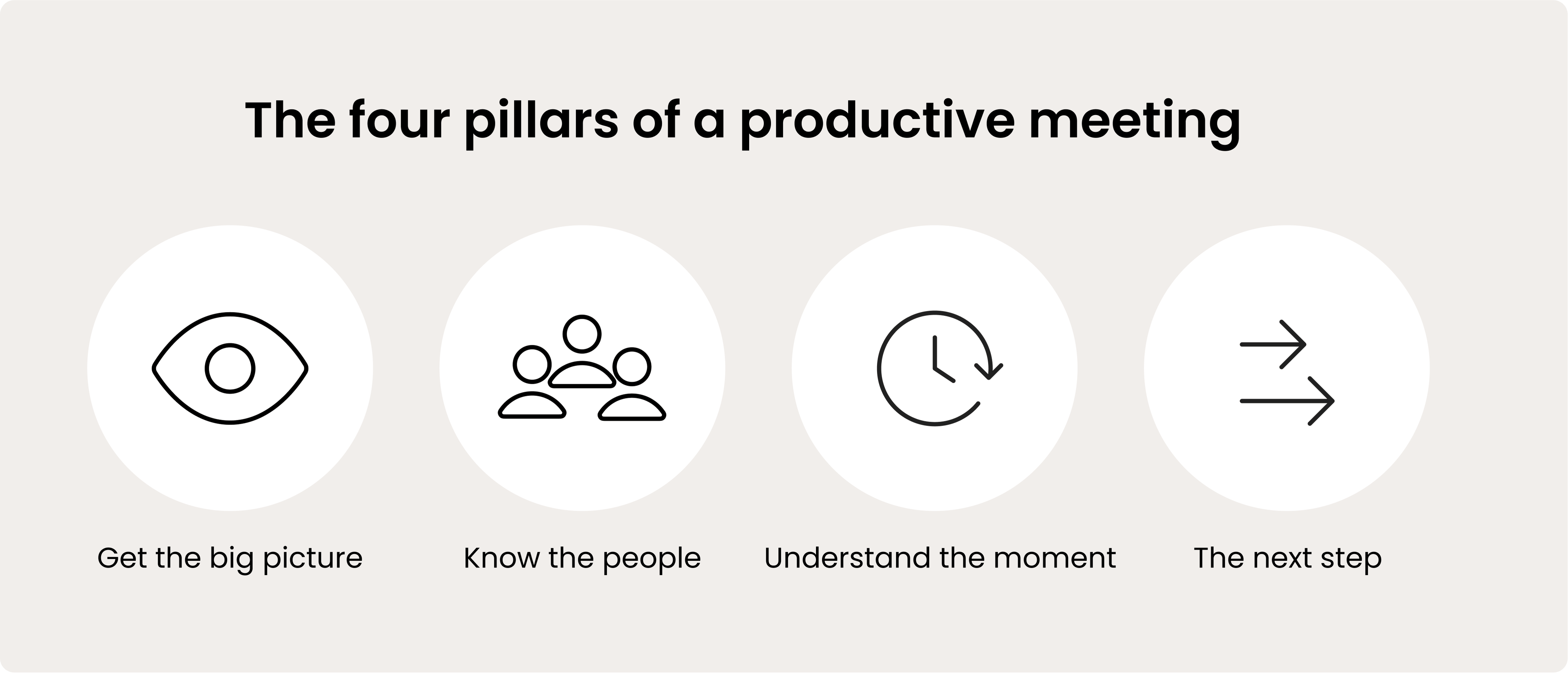Founder, CEO & Strategist since 2001. Anders provides thoughts and reflections about how to think about onlinification and digitalisation in B2B.
Keep me updated!
Subscribe

I can’t remember how many times I've seen people walk into meetings without genuinely knowing who they were meeting or the purpose of the gathering. For me, being prepared has never been optional; it’s the most significant advantage you can bring to any meeting.
Over the years, I’ve realised that doing research isn’t about drowning in tabs or pulling out every financial report you can find. It’s about knowing enough to walk into the room with confidence, context, and a plan.
For me, the goal of research is simple: to understand who I’m talking to, what matters to them right now, and how our conversation can help move their world forward.

If I were to choose the top five essential topics for research before a meeting, I would suggest checking these items off your list:
Who will attend the meeting? What are their roles and backgrounds, and how they fit into the decision-making process? To answer this, always verify LinkedIn or a similar platform before both internal and external meetings. Please extend basic courtesy to the people you are meeting.
You should have a thorough understanding of, for example, the company’s products, solutions, or services; the industry they operate in; the competition; the target markets and ICPs; and the overall market position.
What are their most significant challenges and goals at the moment? Read news and articles or ask them directly before the meeting.
Please review your CRM notes and logs, along with previous emails and proposals, to grasp what has been discussed before and what has worked or not.
Consider the timing of this meeting carefully. How well does it align with budget cycles, financial years, product launches, or seasonal peaks?
While it may not always be possible to review every item on this list before a call or meeting, please ensure you verify at least a few. The more personalised your conversation about the person and their business, the greater the chance that you'll capture their interest—and hopefully their business.
Over the years, I have observed that my most productive meetings tend to follow a consistent pattern.
They’re structured enough to stay on track, yet flexible enough to adapt when new insights emerge.
The key to success is finding a balance between structure and flexibility, ensuring you have enough information to achieve this.
This is how I generally prepare for creating that balance:
I refer to these as the four pillars of a productive and qualitative meeting. Whenever I’ve gone through that preparation process, I feel confident I can walk into any meeting, whether internal or external, feeling focused, relevant, and ready to help make it worthwhile for everyone in the room.

Over the years, I’ve tried many tools for preparing meetings. It's not about having all the tools but knowing which ones provide just enough insights quickly. These are the ones I keep returning to because they help me arrive at a meeting well-informed, confident, and ready to contribute.
Review their complete profile and focus on these areas:
I hope these basic reminders will be helpful to you, and I wish you good luck with your changed behaviour.
This is an updated version of an article originally published on April 19, 2017.